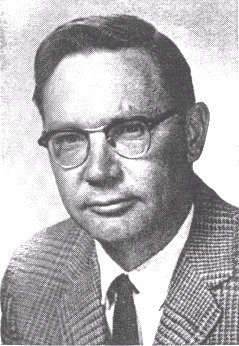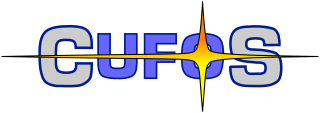Related Research Articles

An unidentified flying object (UFO), or unidentified anomalous phenomenon (UAP), is any perceived airborne, submerged or transmedium phenomenon that cannot be immediately identified or explained. Upon investigation, most UAPs are identified as known objects or atmospheric phenomena, while a small number remain unexplained.

Charles Hoy Fort was an American writer and researcher who specialized in anomalous phenomena. The terms "Fortean" and "Forteana" are sometimes used to characterize various such phenomena. Fort's books sold well and are still in print. His work continues to inspire admirers, who refer to themselves as "Forteans", and has influenced some aspects of science fiction.
In ufology, a close encounter is an event in which a person witnesses an unidentified flying object (UFO). This terminology and the system of classification behind it were first suggested in astronomer and UFO researcher J. Allen Hynek's 1972 book The UFO Experience: A Scientific Inquiry. Categories beyond Hynek's original three have been added by others but have not gained universal acceptance, mainly because they lack the scientific rigor that Hynek aimed to bring to ufology.

Ufology is the investigation of unidentified flying objects (UFOs) by people who believe that they may be of extraordinary origins. While there are instances of government, private, and fringe science investigations of UFOs, ufology is generally regarded by skeptics and science educators as an example of pseudoscience.
The extraterrestrial hypothesis (ETH) proposes that some unidentified flying objects (UFOs) are best explained as being physical spacecraft occupied by extraterrestrial intelligence or non-human aliens, or non-occupied alien probes from other planets visiting Earth.

Josef Allen Hynek was an American astronomer, professor, and ufologist. He is perhaps best remembered for his UFO research. Hynek acted as scientific advisor to UFO studies undertaken by the U.S. Air Force under three projects: Project Sign (1947–1949), Project Grudge (1949–1951) and Project Blue Book (1952–1969).
Loren Coleman is an American cryptozoologist who has written over 40 books on a number of topics, including the pseudoscience and subculture of cryptozoology.

Ivan Terence Sanderson was a British biologist and writer born in Edinburgh, Scotland, who became a naturalized citizen of the United States. Sanderson wrote on nature and travel, and was a frequent guest on television talk shows and variety shows of the 1950s and '60s, displaying and discussing exotic animals.

Jacques Fabrice Vallée is an Internet pioneer, computer scientist, venture capitalist, author, ufologist and astronomer currently residing in San Francisco, California and Paris, France.
Green fireballs are a type of unidentified flying object (UFO) that has been reported since the early 1950s. Early sightings primarily occurred in the southwestern United States, particularly in New Mexico. Although some ufologists and ufology organizations consider green fireballs to be of artificial extraterrestrial origin, mainstream, non-pseudoscientific explanations have been provided, including natural bolides.

James Edward McDonald was an American physicist. He is best known for his research regarding UFOs. McDonald was a senior physicist at the Institute for Atmospheric Physics and a professor of meteorology at the University of Arizona in Tucson.
The National Investigations Committee On Aerial Phenomena (NICAP) is an unidentified flying object (UFO) research group most active in the United States from the 1950s to the 1980s. It remains active primarily as an informational depository on the UFO phenomenon.

The Center for UFO Studies (CUFOS) is a privately funded UFO research group. The group was founded in 1973 by J. Allen Hynek, who at the time was chair of the Department of Astronomy at Northwestern University in Illinois.
Morris Ketchum Jessup was an American ufologist. He had a Master of Science Degree in astronomy and, though employed for most of his life as an automobile-parts salesman and a photographer, is probably best remembered for his writings on UFOs.
Identifying unidentified flying objects (UFOs) is a difficult task due to the normally poor quality of the evidence provided by those who report sighting the unknown object. Observations and subsequent reporting are often made by those untrained in astronomy, atmospheric phenomena, aeronautics, physics, and perception. Nevertheless, most officially investigated UFO sightings, such as from the U.S. Air Force's Project Blue Book, have been identified as being due to honest misidentifications of natural phenomena, aircraft, or other prosaic explanations. In early U.S. Air Force attempts to explain UFO sightings, unexplained sightings routinely numbered over one in five reports. However, in early 1953, right after the CIA's Robertson Panel, percentages of unexplained sightings dropped precipitously, usually being only a few percent in any given year. When Project Blue Book closed down in 1970, only 6% of all cases were classified as being truly unidentified.
Orfeo Matthew Angelucci was an American author, lecturer, and so-called contactee - known for his claims that he had experiences with extraterrestrial beings. He lectured extensively on the subject of his extraterrestrial encounters between the 1950s and 1960s before his passing in 1993.

Anomalistics is the use of scientific methods to evaluate anomalies, with the aim of finding a rational explanation. The term itself was coined in 1973 by Drew University anthropologist Roger W. Wescott, who defined it as being the "serious and systematic study of all phenomena that fail to fit the picture of reality provided for us by common sense or by the established sciences."
Project Magnet was an unidentified flying object (UFO) study programme established by Transport Canada in December 1950 under the direction of Wilbert Brockhouse Smith, senior radio engineer for Transport Canada's Broadcast and Measurements Section. It was formally active until mid-1954 and informally active until Smith's death in 1962. Smith eventually concluded that UFOs were probably extraterrestrial in origin and likely operated by manipulation of magnetism.
References
- 1 2 "Jerome Clark". Contemporary Authors Online. June 12, 2002. Retrieved on April 11, 2012.
- 1 2 "Jerome Clark". Allmusic.com . Retrieved April 15, 2012.
- ↑ "Fate Magazine Takes the Fringe of Lunacy and Makes It Believable". Youngstown Daily Vindicator. August 19, 1982. Retrieved on April 11, 2012.
- ↑ Nickell, Joe. "Alien implants: The new 'hard evidence'". September/October 1998. Skeptical Inquirer. Retrieved April 16, 2012.
- ↑ "The CUFOS Organization". The Center for UFO Studies (CUFOS). Retrieved April 16, 2012.
- 1 2 The UFO encyclopedia. Apogee Books. 1990. ISBN 9781558883017.
- ↑ Burgess, Steve (August 16, 1999). "Loren Coleman, Loch Ness snowman of cryptozoology". Monday, Aug 16, 1999. Salon.com. Retrieved April 15, 2012.
- ↑ Hartston, William (May 27, 2001). ""Extraordinary Encounters" Jerome Clark. "UFOs and Popular Culture" James R. Lewis. Both ABC-CLIO; Inexplicably entertaining". Sunday Express.
- ↑ Alan Poling; Henry Schlinger; Stephen Starin; Elbert Blakely (March 9, 2013). Psychology: A Behavioral Overview. Springer Science & Business Media. pp. 43–. ISBN 978-1-4615-7694-5.
- ↑ "Jerome Clark: Reviews by Jerome include:" from Rambles.NET; URL accessed March 6, 2007